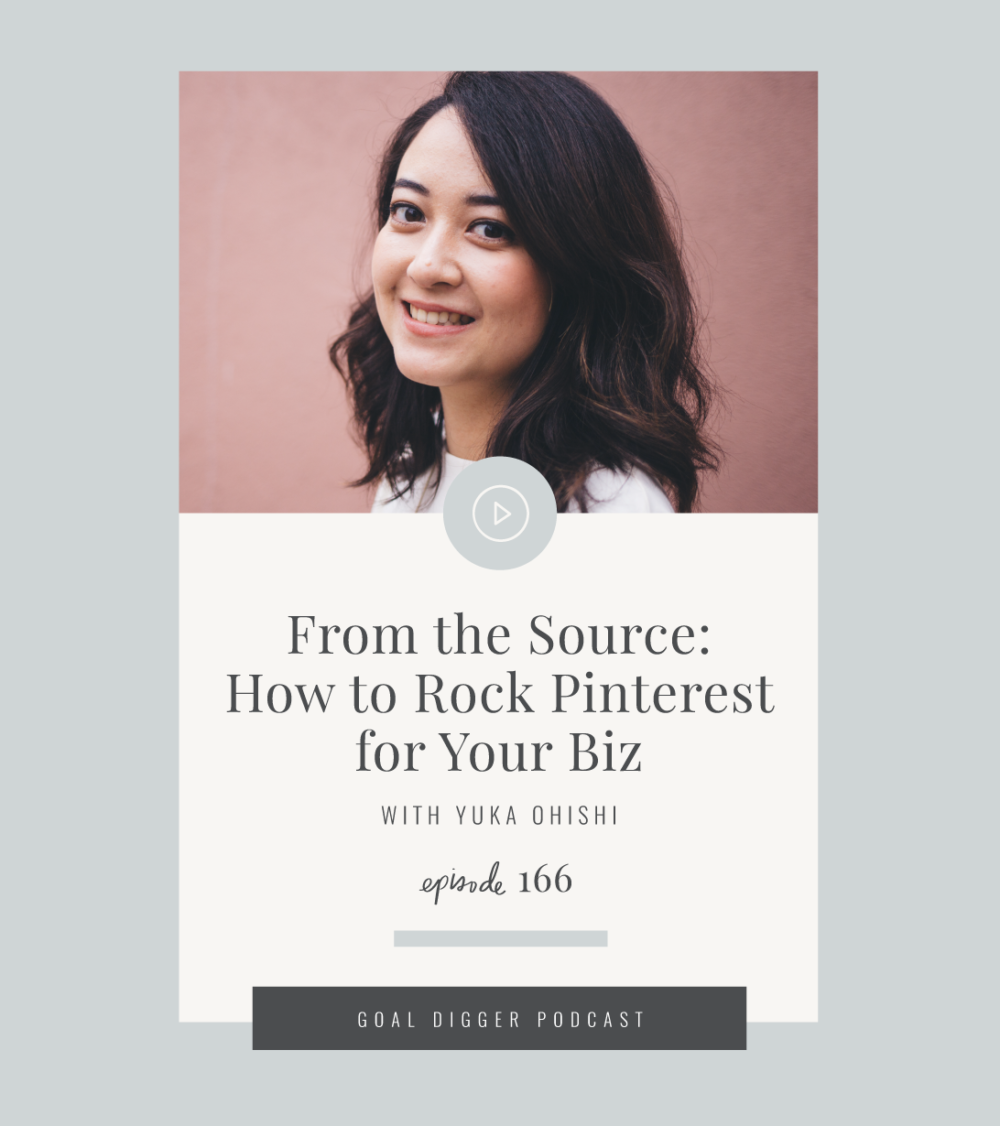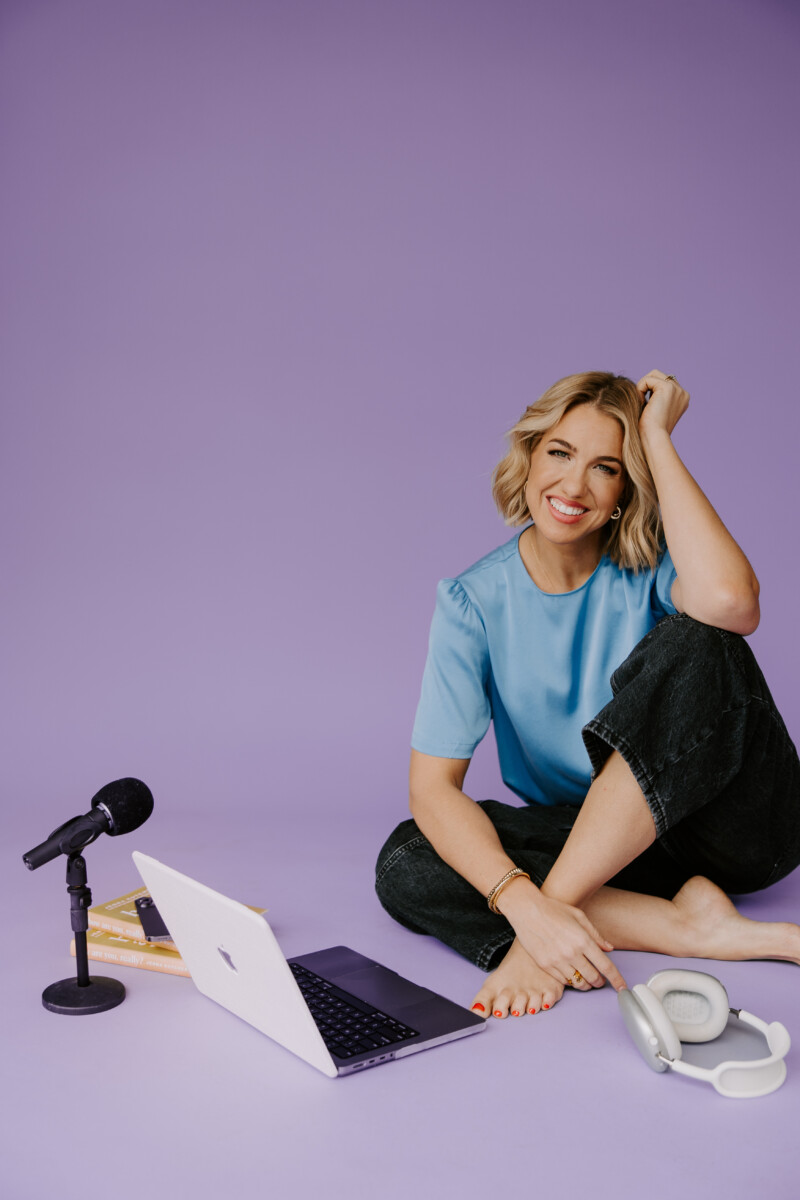
Goal Diggers you are in for a treat! We always do our best to bring you the top experts in a field, and today is no exception! We all know that Pinterest can be a game changer in our business, and today we are inviting the amazing Yuka Ohishi onto our show to give us all the secrets to maximizing our reach while we pin!
Yuka is a Creator Programs lead and International Program Manager at Pinterest. Today, we are hearing FROM THE SOURCE, how to use Pinterest to change your business for the better!
We’re covering everything from the new Pinterest business profile to hashtags on Pinterest to current trends to take advantage of and answering all your burning Pinterest questions straight from the source. Without further adou, here we go!
Why It is Crucial to use Pinterest to grow your business:
She explains that Pinterest’s mission is to help people discover and do what they love. People are looking for things to design their life whether it’s what to make for dinner or help in their business. Pinterest users are planners and people go to their platform to be inspired at the beginning of their journey for an idea. This is great for businesses because we can play a big role in terms of offering the answers in solutions our businesses could provide to them.
We talk at length about using something called the Pinterest 100 which is the current trends on Pinterest and why this is important for your business. The Pinterest 100 are predictions on what pins and topics will do well across top categories based on global data of what people are searching for. It’s a great place to start when thinking about what pins are popular to pin for your audience.
When asked if we should we be pinning popular trends even if they aren’t in line with our business and what we are selling, Yuka says if our audience is truly interested, it’s great to be a resource for other topics as well. But if you’re just pinning popular content to try to do well in the system and it doesn’t resonate with your audience, this ultimately will be a disservice to you because you should be true to your audience and be useful to your followers. If the content you are pinning doesn’t resonate with your audience, it will be less likely to be distributed to other users on the app.
How important is pinning others content?
It’s great to pin other peoples work if it’s helpful and useful to your audience. But don’t just pin for pinning sake. Approach this as helping your community. Staying authentic and true to your brand is really important.
My take on the topic: “For my business, if I think about my Pinterest board as an editorial look at my business, my fashion and home decor boards have more followers than my business boards – but I’m getting people interested in my boards and my content by sharing things I love myself that my followers are also interested in. These topics are still aligned and on brand with my business.”
We’ve been hearing about the new following tab, what is it and how can we use it in our business?
The new following tab shows pins from people you follow exclusively whereas the home tab will also show you recommendations from people you do not yet follow. And so, do followers still matter?
The new business profile now showcases monthly viewers instead of just your follower count. So now both numbers matter. If you have more followers, your content will have higher engagement earlier and that’s the barometer Pinterest uses to determine the pins success. If a pin does well with your followers, it is then distributed to other peoples home feeds that don’t follow you (which accounts for your monthly view count). Yuka explains that your follower count is not the ceiling, it’s just the number that facilitates your overall monthly viewer count.
BONUS! We polled our Pinterest Lab students on their burning questions and Yuka was kind enough to answer them:
“I’m wondering about Hashtags and Pinterest – do they matter considering all words are searchable within Pinterest?”
Keywords and hashtags are handled differently within Pinterest and have separate purposes. When users search for a hashtag, the freshest pins that include that hashtag in the description will show up in the results in more of a chronological listing. However, when someone searches for the same keyword without the hashtag, it will bring up normal search results which include the top performing pins with that keyword and the results are ranked for you as the user specifically. Hashtags are a new feature and content creators are starting to use them in their pinning strategy for exposure to new people. Yuka says it’s not worth our time adding hashtags to old content, but rather to start to add them to new pins.
“We know that claiming your website is important because Pinterest rewards content creators who bring in valuable pins from their own sites. What about if you have multiple sites that you are creating content on?”
You can only claim one domain per account, but Pinterest is always updating the platform and they are open to thinking through cases like this to work through different ways to help out content creators here. Start by claiming the main website that you’ll be creating content for and stay tuned for updates as Pinterest is constantly improving their platform.
“Can you give us a good daily workflow to follow on Pinterest?”
Yuka says it’s really simple: when you create new content, always make sure you pin it! She also says you don’t have to be the only one responsible for pinning from your domain. Yuka says to make sure your website is user friendly so that other people can do some of your pinning for you through the save button.
On team Jenna Kutcher, we batch our Pinterest work and make sure we’re getting all our new content pinned each week and then spend some time on the platform itself engaging with the content. In my opinion, it’s the app we spend the least amount of time on but yields the best results. Yuka elaborates on this workflow and says it’s better to spread out your activity so that you’re not pinning everything from the week all at once. Pinterest would rather see regular pins each day than dumping a bunch of pins all at once. Because we love batch working around here, we accomplish this with our scheduling app Tailwind to help spread out our pinning efforts.
“Can you talk about updates to the analytics and tips for getting your content seen in the smart feed?”
There are outdated best practices and myths that float around the internet and Yuka wants to make sure everyone has the latest best practices you can read here.
The main tip she has on the topic is to use guided search to find relevant keywords for your description. To do this, put a keyword in the search bar on Pinterest and it will auto-generate other related words similar that people are searching for like the term you entered. This can be really helpful in expanding your keyword strategy and it’s a great insight into what people are actually searching for related to your topic.
“Some of our students don’t blog but do own an online shop. How can they take advantage of Pinterest without a giant library of content”
Online shops do really well on Pinterest because people come to Pinterest to find things they can do, buy or cook. They aren’t looking for photos of friends like on other platforms.
Yuka’s tip is to enable product rich pins so that Pinterest knows your pin is linked to a shoppable product and then pinners will also know they can click through and take action to buy your product. Also, create multiple images that link to the same product to create many pins and build a bigger library of content. Also, try out different titles, calls to actions and descriptions and see which ones resonate best with your audience.
“If a pin is underperforming, would it be better to update the description or delete and start over from scratch?”
Yuka says to never delete pins because they aren’t hurting your performance. Pins have a longer shelf life and you never know, it may do well sometime in the future.
Yuka also advises creating multiple pins for each blog post as part of your workflow. For example, using different photos or different calls to actions or descriptions for the same blog post and then spread those out so that they are pinned and get to your followers on different days (and not all at once).
“We love that you can pin from Instagram, do you have any best practices for pinning from one platform to another?”
Yuka says to test resizing your Instagram images from the 1×1 ratio to Pinterest’s best practices size of 2×3. 1×1 is fine, but if you want to experiment, you could crop it and see if it performs better.
Because the trend is to create really long descriptions on Instagram like a blog post (which Yuka says is useful information and can do well on Pinterest), but you won’t be able to include it all in your pin description because of the limited word count, so changing the description to be customized for Pinterest is a great idea. Her tip is to give a cliffs notes version and a call to action to get people to click through to your Instagram account and read more.
“If someone sees the value of Pinterest for business but is overwhelmed with where to start, what 3 steps can they take today to get started?”
- Create a business account because that unlocks a lot of different tools including analytics and the new profile
- Claim your domain which unlocks another layer of tools available to you
- Start pinning content you already have and make your website Pinterest friendly so that you don’t have to do all of your pinning yourself
JENNA KUTCHER FREEBIE: The Ultimate Pinterest Guide
Click Here For Pinterest Best practices and Trend Reports !
Check out our sponsor, Skillshare here!





[…] few months back I was cleaning my house and listening to Jenna Kutcher’s Goal Digger podcast with Yuka Ohishi (Episode 166). Yuka is an International Programs Manager at Pinterest and her insight was SO impactful to my […]
[…] Check out: How to rock Pinterest for your Biz […]